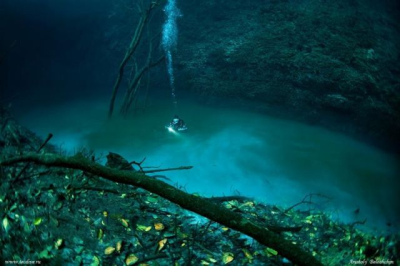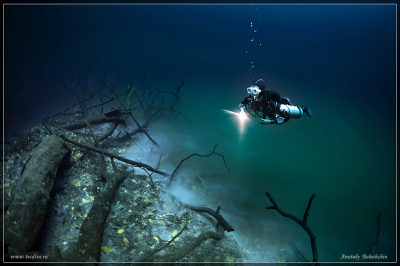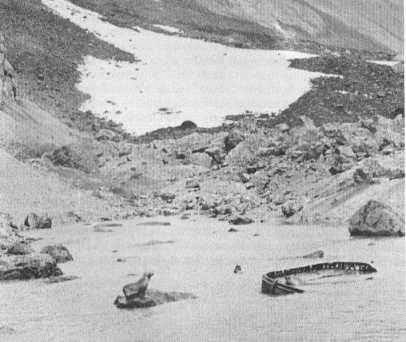In terms of unexplained incidents throughout history, the ‘Dyatlov Pass Incident’ is probably one of the scariest. To this day, no one is entirely sure exactly what happened that fateful night, but there are a few theories. So, for those who haven’t heard of it, what exactly was the Dyatlov Pass Incident?
In February 1959, ten Russian ski hikers, most of them university students, decided to trek across the northern Ural Mountains together. They were led by Igor Dyatlov (the mountain pass in question is now named after him). One of the hikers had to return home due to illness, and it was lucky that he did, because he would be the only group member to make it home alive. The group was expected to make contact with their sports club once they had returned to Vizhai, a far-north Russian town. When nothing was heard from them for an extended period of time, friends and relatives began to worry, and a rescue operation consisting of students and teachers was dispatched. Not long after that, the police and military became involved. On February 26th, the hiker’s tent was discovered on the eastern shoulder of a mountain, now ominously known as Kholat Syakhl (Mountain of the Dead).

The hiker’s tent as it appeared on the day it was found – 26th February, 1959
The tent appeared to have been cut open from the inside, and all the hiker’s belongings were still in it, including their shoes. This probably meant that something had caused them to flee in the middle of the night, without even stopping to put their footwear on despite the intense cold. Footprints, made by sets of both barefoot and sock-clad feet were found, and these footprints headed down the mountain to the other side of the pass, where there was a forested area. Unfortunately, after a short distance the footprint trail was covered in too much snow to be of any more use.
On the edge of the forest, the rescue operation found evidence of a campfire, along with the bodies of two of the hikers. They were barefoot and clad in only their underwear. Not far from these bodies, three more bodies were found, and all looked as if they had been heading back towards the camp. The other four hiker’s bodies were not found for several more weeks, as they were buried under a few metres of snow in a nearby ravine. They were dressed in more clothes than the others, and it looked like they had taken clothes from the previous five after they had died, in an attempt to keep themselves warm.
Medical inquests found that six of the hikers had died of hypothermia, and the other three had sustained fatal injuries; one had a crushed skull and the other two had chest fractures. The chest fractures were said to have been caused by some kind of massive pressure, akin to the force generated by a car accident. Strangely, one of them was also missing a tongue. Whilst it was initially suspected that they may have been killed by local indigenous Mansi people, there was no evidence of any other people having been in the area at the time. Along with this, the medical report claimed that humans couldn’t possibly cause the kind of damage seen on the victims, stating instead that the hikers had died from a ‘compelling natural force’.
There were other more controversial claims about the case:
1.) Apparently, forensic tests also showed high levels of radioactive contamination on the hiker’s clothing.
2.) An attendee at the hiker’s funerals stated that their skin seemed to have a ‘deep tan’
3.) Some people who had also been hiking in the area came forward to claim that on the night that the incident occurred, they saw orange glowing spheres in the sky (later found to be missile launches)
4.) Others claimed that there was a big military accident cover-up going on, as evidenced by the large amount of scrap metal in the area.
5.) The reports on the incident were allegedly hidden by the government and revealed only in the 1990’s, with parts still hidden.
These more controversial claims have generally been dismissed; however, the actual cause of the incident is still unknown. Many people have posited the theory that an avalanche was responsible. This makes a lot of sense; the hikers may have been awoken by the sound of an approaching avalanche, cut the tent open and ran as fast as they could, not even bothering to take shoes or clothes with them in their hurry to escape. Being hit by an avalanche could also explain the massive force exerted on the three hikers who sustained fatal physical injuries, and even the missing tongue. However, an avalanche would probably have covered the footprints leading away from the tent, but they were still highly visible. There was also no avalanche damage seen in the area.

Avalanche – Courtesy of Scientif38
Thus, no one is entirely sure what happened to these poor hikers. I think that what may have occurred is this: they were all asleep, and awoken by the sound of the missile launches or perhaps a plane passing overhead. Sleepily mistaking the sound for the booming of an impending avalanche, they cut the tent open and raced away as quickly as they could. Once they realized that there was no avalanche, they started to make their way back to their camp, but by this stage six had perished from hypothermia due to the exposure to the freezing elements. This explains why three of the bodies were found in various stages of making their way back to the tent. The other four took their clothes to keep warm, and ended up falling into the ravine that they were later found in. The heavy fall could explain the bodily trauma. As for the missing tongue, it’s possible that an animal could have scavenged it, especially seeing as the bodies were lying in the open for quite some time before being discovered.
Of course, this is just my speculation. For all I know, some other terrifying ‘compelling force’ may have scared the hikers into running away in the middle of the night, and this ‘force’ may have been responsible for the massive trauma found on three of the bodies.
So, did something sinister cause this incident, or is there a logical explanation? Anyone with their own ideas or theories is welcome to comment below. For more information and some (quite gruesome) photos associated with the incident, check out http://www.ermaktravel.com/Europe/Russia/Cholat-%20Syachil/Kholat%20Syakhl.htm
Tags: conspiracy theories, Death, Dyatlov Pass incident, Hiking, Kholat Syakhl, Mansi people, scary, Soviet Union, unexplained, Ural Mountains, weird world













You must be logged in to post a comment.